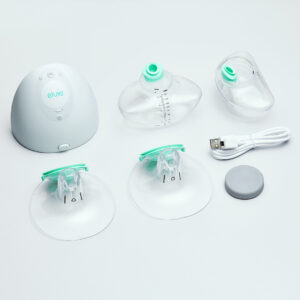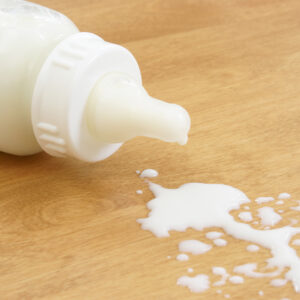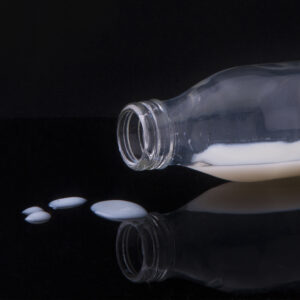Are you experiencing difficulties when nursing your newborn baby? Well, you have nothing to worry about because most mothers go through it too, so you’re not alone!
Although breastfeeding your baby is natural, it doesn’t always come easy. There are challenges along the way that may make it a slightly bumpy road. The good news is with the right support system, you’ll find it easier to nurse your baby during the first few weeks or months. You’ll even discover that early breastfeeding problems are easy to deal with when you know what to do!
That’s why today, we’re sharing the most common breastfeeding issues and how mummies can handle them. By being aware of them, you’ll be more prepared to enter this stage and go through your breastfeeding journey more successfully.

- Breast Engorgement
About 3 days after giving birth, your breasts will feel heavy, full, swollen, and sometimes even uncomfortable, making it harder for your baby to latch on them.
Breast engorgement usually happens at the start of your breastfeeding journey when your breasts are still adjusting to the increase in milk supply. It happens to most mums, but first-time mothers are more likely to experience it than seasoned ones.
It usually starts a few days into postpartum, but it can also happen if your baby isn’t completely draining your breasts of milk.
Solution:
The primary treatment for breast engorgement is by feeding your baby frequently, about 8 to 12 times every 24 hours.
You can also try hand expressing before breastfeeding to start the milk flowing and soften your breasts so that it’s easier for your baby to latch on them.
Expressing milk can either be manual or with a hands-free breast pump. Some mummies prefer to use this because it’s convenient, wearable, and doesn’t create as much noise.
Whatever your preferred method of expressing milk, make sure you’re not skipping feedings and continue to nurse your baby even during the night. The more you and your baby get used to it, the easier the process will become.
An unusual tip you can do to relieve the discomfort is to tuck clean and cooled cabbage leaves into your bra before feeding sessions. You can also follow it up with a warm compress in between feedings.

- Sore Nipples
You’ve likely heard of mummies giving up on breastfeeding due to the pain and discomfort of sore and cracked nipples. Mothers usually report a painful “tingling” sensation during the first seconds of nursing, but it usually goes away after a few minutes or so.
However, that’s not the case for other mothers. Sometimes, the pain persists and becomes unbearable for them to continue nursing their babies.
Nipple tenderness after giving birth is completely normal but experiencing cracked, sore, and bleeding nipples isn’t. These are common signs of infection, which may explain the persistent pain during breastfeeding.
There are ways to relieve the pain of sore nipples temporarily, but we’d strongly suggest talking to your doctor or a lactation consultant.
Solution:
The ideal remedy to sore nipples is to teach your baby the proper latch-on technique. It can be difficult doing this on your own, so getting in touch with a lactation consultant will be a huge help.
The next step is to try different breastfeeding positions for each feeding and see which one feels most comfortable for you. There are breastfeeding positions that make it difficult for babies to latch, which makes it more painful for you as well.
For example, if your baby has a shallow latch, your nipple is right in front of their mouth, which means that it’s rubbing their hard palate.
To help with the pain, begin nursing with the less painful side (or less sore nipple) as your baby is likely to latch and suck intensely early in the feeding. By doing this, you’re giving time for your nipples to heal.
After feeding, rub some fresh breast milk on your nipples to help with the healing process! Human breast milk comes with antibacterial properties, reducing the chances of infection.

- Clogged Milk Ducts
Clogged milk ducts happen when the baby doesn’t fully drain the breasts of milk, allowing milk to accumulate and block the ducts. This commonly happens when your baby has a poor latch and isn’t completely drinking all the milk in your breasts.
Don’t worry though, as it’s normal and not serious, but it can lead to a breast infection if ignored.
You’ll know you have clogged ducts if you’re experiencing pain in your breasts, swollen lump, heat and swelling, and slower milk flow. Other causes include compressing your breasts while sleeping and using breast pumps of the wrong size.
Solution:
The best way to avoid clogged milk ducts is to teach your baby the proper latch-on technique early on in the feeding stage. You’ll not only be safe from clogged ducts but other breastfeeding problems as well.
Another way is to breastfeed as often as possible, even if there’s discomfort sometimes. It’s what keeps the milk flowing, which helps remove the clog.
You can try nursing your baby on the affected side first at each feeding until the duct is cleared. If there are two affected sides, alternate positions to encourage your baby to unclog both ducts.
If feeding your baby isn’t enough to remove the clog, applying a warm compress and massaging your breasts can help break the clog as well.
To sum it up, don’t give up nursing your baby!

- Leaking Breasts
Many first-time mums experience milk leakage at least once, so it’s more common than you think! There’s no need to panic and be embarrassed in case it happens to you!
You may find yourself leaking from one breast when you’re nursing your baby on the other side, laying down, or stimulated by hearing another baby cry while outdoors. It happens, so don’t worry!
It usually happens during the early stages of breastfeeding and usually settles down after a month or two.
Solution:
Leaks occur when your breasts aren’t completely drained of milk, so try to nurse your baby at least 8 to 12 times a day.
You can also protect your clothes when going out by wearing washable nursing pads inside your bra. In case there’s a leak, it won’t easily leak through your garments.
We’d recommend staying away from nursing pads with plastic liners because they can trap moisture and cause sore nipples.
If you’re outside and start feeling a leak, try gently pressing your breasts to your chest wall by crossing your arms and squeezing them against your breasts.
By doing these, you’ll avoid the discomfort of having to deal with breast leaks while you’re outside and don’t have a space to nurse your baby.

- Low Milk Supply
Poor milk supply is considered one of the reasons why mothers stopped nursing their babies and introduced solid foods on the 6-month mark.
However, this is a common misconception amongst mothers. In fact, the percentage of mothers who can’t produce enough milk is only 5%, so it’s lower than you think!
Even then, that’s not the end of the world for them. There are natural ways to keep breast milk flowing again.
The fear of a poor low milk supply causes mummies to worry if their baby is getting enough milk, but that’s not actually a problem since their stomach is tiny at first.
As long as your baby is gaining weight, getting enough sleep every day, and hitting their developmental milestones, there’s nothing to worry about your milk supply. You only need to worry if your baby is losing weight and producing too few wet nappies.
Solution:
Before giving up on breastfeeding, consult with your doctor first if you believe your baby isn’t getting enough milk. You should be referred to a lactation consultant who should monitor and check your baby’s latch.
Another possible solution is to feed on demand, not on a schedule. A few weeks into postpartum, a newborn typically gets hungry every 2 to 3 hours throughout the entire day.
Instead of following a schedule, nurse your baby every time he gets hungry, no matter how frequent it is because the key to stable milk production is regular nursing.
If frequent nursing causes discomfort, try using a hand-free breast pump! It helps keep your breast milk flowing.
Lastly, being a nursing mother is stressful on its own, so don’t forget to look after yourself. Try to get enough rest, eat healthy foods, and don’t hesitate to reach out for help if things get too overwhelming.
If you’re looking for other ways to increase your milk supply, we recommend reading our tips on increasing milk supply! You’ll find this useful if your main concern with breastfeeding is milk supply.

The journey of breastfeeding
Breastfeeding is a universal experience shared by mothers, so don’t get discouraged when you’re having a hard time making your baby latch or think that you’re not producing enough milk.
The solutions to these breastfeeding problems are easier than you think! That’s why it’s important to equip yourself with the right mum essentials during breastfeeding.
Hatchery Cribs is an online baby shop in Singapore that carries all types of baby and mum essentials! You can check out our wide range of nursing essentials on our website, or even book a tour to our showroom to see them for yourself.


